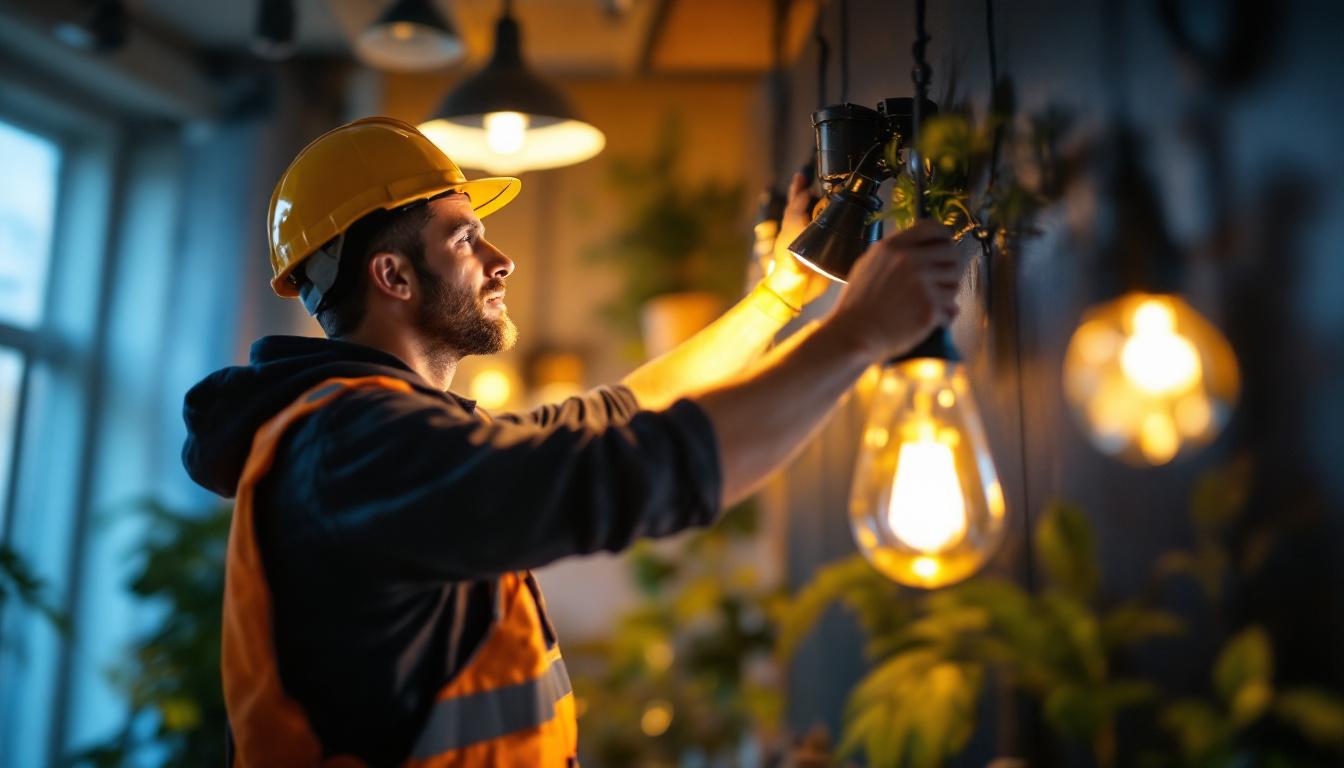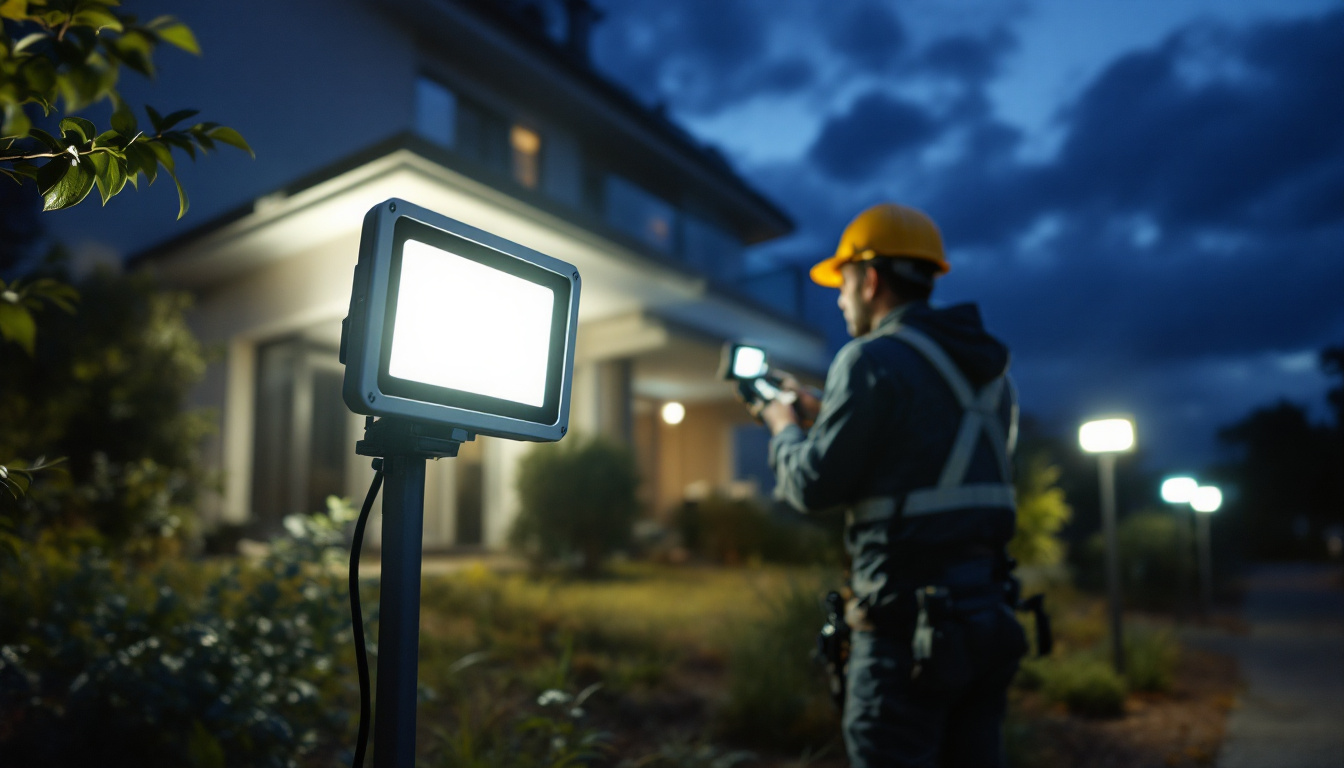
Foot-candle is a term that lighting contractors encounter frequently, yet it often causes confusion. At its core, a foot-candle (fc) measures the intensity of light falling on a surface—specifically, one lumen per square foot. This measurement is crucial because it directly influences how well a space is illuminated, impacting everything from safety to aesthetics. The concept of foot-candles is not only important for ensuring visibility but also plays a significant role in energy efficiency and sustainability. With the increasing emphasis on green building practices, understanding how to optimize foot-candle levels can lead to reduced energy consumption and lower operational costs.
For contractors, mastering foot-candle measurements means more than just knowing the number. It requires understanding how light behaves in different environments and how to apply those insights to meet client needs. Whether working on commercial offices, retail spaces, or industrial settings, precise foot-candle calculations ensure that lighting is both functional and efficient. Additionally, the choice of light sources—such as LEDs versus traditional incandescent bulbs—can dramatically affect foot-candle output, making it essential for contractors to stay updated on the latest lighting technologies and their respective efficiencies.
Lighting isn’t just about brightness; it’s about creating the right environment. Too little light can cause eye strain and reduce productivity, while too much can lead to glare and discomfort. Foot-candle levels provide a quantifiable way to strike this balance. For example, a warehouse might require 30-50 foot-candles for safe operations, whereas a conference room might only need 20 foot-candles for comfortable visibility. Moreover, different tasks within the same space can necessitate varying foot-candle levels; for instance, a reading area may require more light than a lounge area, highlighting the importance of tailored lighting solutions.
Standards set by organizations such as the Illuminating Engineering Society (IES) offer guidelines on recommended foot-candle levels for various applications. Adhering to these recommendations helps contractors deliver lighting solutions that meet both regulatory requirements and client expectations. Furthermore, understanding the psychological effects of lighting can enhance the overall experience of a space. Research has shown that appropriate lighting can influence mood, productivity, and even health, making it imperative for contractors to consider foot-candle levels not just as a technical specification, but as a vital component of holistic design. By integrating foot-candle measurements with an understanding of human behavior and environmental factors, contractors can create spaces that are not only well-lit but also conducive to well-being and efficiency.
Accurate measurement is the backbone of effective lighting installation and maintenance. Contractors must be proficient with light meters, devices designed to measure foot-candle levels precisely. Using these tools correctly ensures that lighting installations meet design specifications and perform as intended.
Not all light meters are created equal. When selecting a meter, contractors should consider factors such as sensor type, measurement range, and ease of use. A cosine-corrected sensor is essential because it accounts for light coming from different angles, providing a more accurate reading. Additionally, meters with a wide measurement range accommodate various lighting conditions, from dim ambient light to intense task lighting. Some advanced models even offer data logging capabilities, allowing users to track changes over time and analyze trends in lighting performance, which can be invaluable for long-term projects.
To get reliable foot-candle readings, measurements should be taken at the working plane—the surface where tasks are performed, such as desks or countertops. Multiple readings across the space help identify inconsistencies and ensure uniform illumination. It’s also important to measure under typical operating conditions, meaning lights should be turned on and any daylight factored in. This consideration is particularly crucial in spaces with large windows or skylights, where natural light can significantly affect the overall illumination levels.
Recording data systematically allows contractors to compare results against design goals and make necessary adjustments. This practice is especially valuable during commissioning and troubleshooting phases. Additionally, contractors should consider documenting the environmental conditions during measurements, such as time of day and weather conditions, as these factors can influence light levels. By maintaining a comprehensive log, contractors can provide clients with detailed reports that not only highlight compliance with lighting standards but also offer insights into potential areas for improvement in future installations.
Understanding foot-candles is one thing; applying that knowledge effectively is another. Contractors who master this skill can tailor lighting designs to specific environments, improving both performance and client satisfaction.
Different spaces demand different lighting strategies. For instance, retail environments benefit from higher foot-candle levels to highlight merchandise, often ranging between 50 to 100 fc. In contrast, hallways and corridors might only require 5 to 10 fc to maintain safety without excessive energy use.
Contractors should collaborate closely with designers and clients to determine the appropriate foot-candle levels based on the space’s function. This collaboration ensures that lighting enhances the environment rather than detracts from it.
Energy codes and sustainability goals are increasingly influencing lighting choices. By accurately measuring and controlling foot-candle levels, contractors can avoid over-lighting, which wastes energy and increases costs. Using dimmable fixtures, occupancy sensors, and daylight harvesting systems helps maintain optimal foot-candle levels while minimizing energy consumption.
For example, in office spaces, integrating daylight sensors can reduce artificial lighting during sunny periods without compromising the required foot-candle levels. This approach not only saves energy but also improves occupant comfort.
Even experienced contractors face challenges when working with foot-candles. Recognizing these issues and knowing how to address them is key to mastering lighting projects.
Uneven lighting can cause shadows and glare, reducing the effectiveness of a lighting system. It often results from improper fixture placement or incorrect light levels. Conducting thorough foot-candle measurements across the entire space helps identify problem areas.
Adjusting fixture angles, adding supplemental lighting, or using diffusers can improve uniformity. Sometimes, upgrading to fixtures with better beam control is necessary. The goal is to achieve consistent foot-candle readings within the recommended range.
Natural light fluctuates throughout the day, complicating foot-candle management. Contractors must consider how daylight interacts with artificial lighting to maintain consistent illumination. Using light meters during different times helps assess this impact.
Integrating automated controls that adjust artificial lighting based on daylight levels is an effective solution. This approach maintains target foot-candle levels while optimizing energy use.
Building codes and industry standards often specify minimum foot-candle requirements for safety and accessibility. Failing to meet these can result in costly rework or legal issues. Staying current with local regulations and standards is essential.
Contractors should document foot-candle measurements and provide reports to clients and inspectors. This transparency builds trust and demonstrates professionalism.
Advancements in technology have equipped lighting contractors with powerful tools to measure, analyze, and optimize foot-candle levels more effectively.
Modern light meters often feature Bluetooth connectivity, allowing data to be transferred directly to smartphones or tablets. This capability streamlines data collection and analysis, enabling contractors to generate reports quickly and accurately.
Some apps also provide augmented reality interfaces, overlaying foot-candle readings on real-world images. This visual aid helps contractors identify lighting issues intuitively and communicate solutions to clients.
Software tools that simulate lighting conditions before installation are invaluable. They allow contractors to model foot-candle distributions in 3D environments, testing different fixture types, placements, and settings virtually.
By using these tools, contractors can anticipate challenges and optimize designs, reducing costly on-site adjustments. Many software packages also integrate with building information modeling (BIM) systems, enhancing collaboration across project teams.
Incorporating smart controls into lighting systems enables dynamic management of foot-candle levels. Sensors can adjust brightness based on occupancy, daylight, or time of day, maintaining consistent illumination while conserving energy.
Contractors skilled in installing and programming these systems add significant value to their services, offering clients cutting-edge solutions that adapt to changing conditions.
Mastering foot-candle measurements and applications is an ongoing process. The lighting industry evolves rapidly, with new technologies, standards, and client expectations emerging regularly.
Participating in specialized training programs and obtaining certifications, such as those offered by the National Institute for Certification in Engineering Technologies (NICET) or the Lighting Certified program, enhances a contractor’s credibility and skills. These credentials demonstrate a commitment to excellence and keep contractors updated on best practices.
Nothing replaces real-world experience. Regularly measuring foot-candle levels on diverse projects sharpens skills and builds intuition. Reviewing completed projects to assess lighting performance helps identify areas for improvement.
Networking with peers and attending industry events also provide opportunities to exchange knowledge and learn about emerging trends.
For lighting contractors, mastering foot-candle measurement and application is more than a technical requirement-it’s a competitive advantage. Accurate understanding and control of light levels lead to better project outcomes, satisfied clients, and increased efficiency.
By investing in the right tools, embracing technology, and committing to continuous learning, contractors can elevate their expertise and deliver lighting solutions that truly illuminate spaces to their fullest potential.
Ready to transform your expertise into exceptional lighting projects? At LumenWholesale, we support your journey to foot-candle mastery by providing high-quality, spec-grade lighting products at the best wholesale value. Say goodbye to unnecessary markups and hello to a vast selection of reliable lighting solutions that meet rigorous industry standards. Plus, with free shipping on bulk orders, you can stock up on premium lighting without the stress of hidden fees. Elevate your lighting game with the unbeatable combination of quality, affordability, and convenience at LumenWholesale. Start shopping now and light up your projects with confidence.

Discover how the right playroom ceiling light can enhance efficiency for lighting contractors.

Discover why solar LED flood lights are becoming a game-changer for lighting contractors.

Discover the essential checklist for lighting contractors with “Light Bases.” This guide covers crucial steps and considerations to ensure flawless installations, enhance efficiency, and deliver exceptional lighting solutions for any project..

Discover expert insights on choosing the perfect LED lights for your kitchen ceiling with this comprehensive guide from a seasoned lighting contractor.